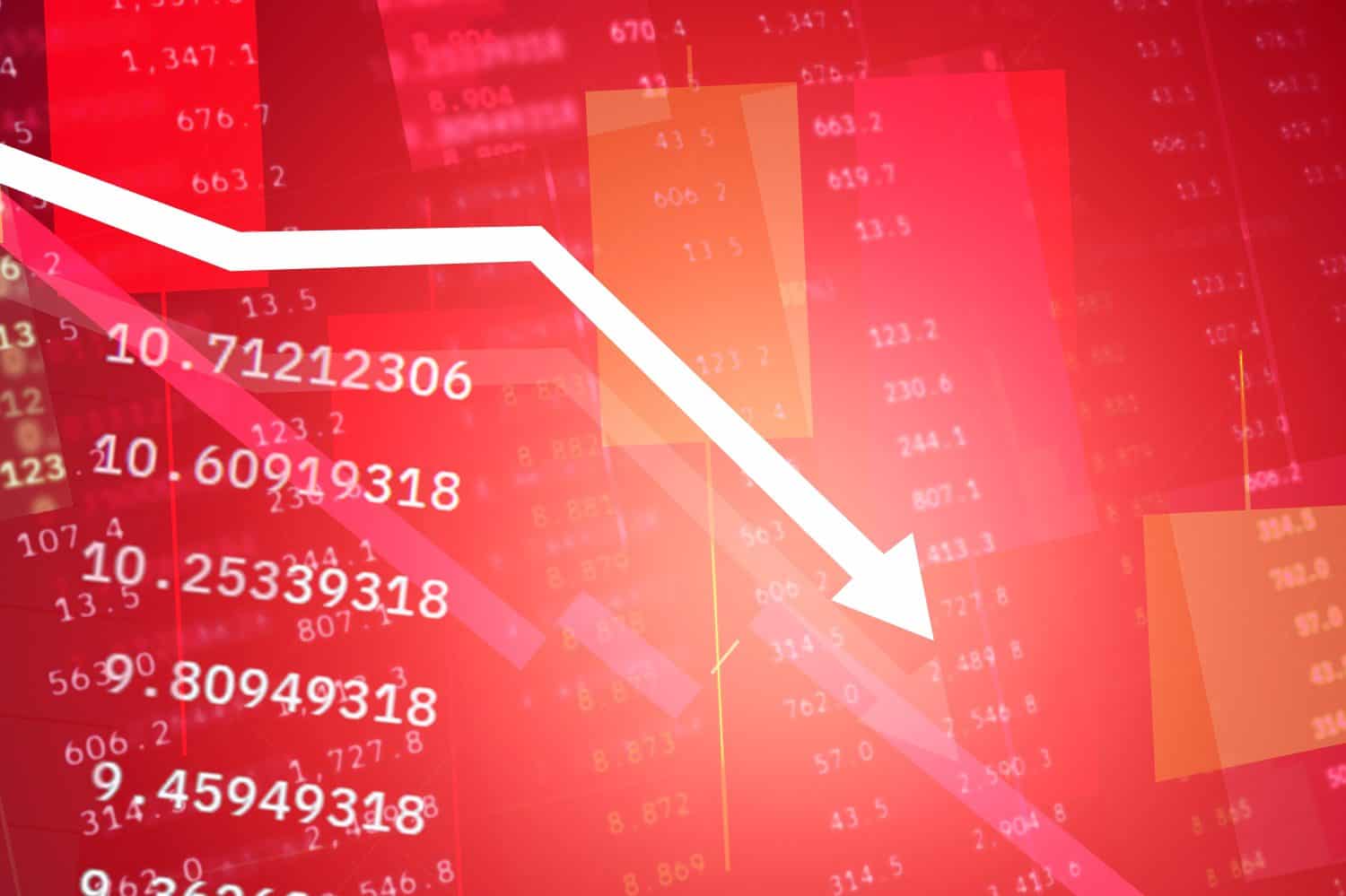Key Points
-
The market price of ULTY has fallen significantly from February to August by over 25%, and nearly 70% from its high, which has caused some analysts to downgrade it to a “hold”.
-
The high 86% distribution yield is paid out weekly, making it extremely popular with many investors with high risk tolerance.
-
There is a significant return of capital component to ULTY, but there is also a free ride aspect to it for shareholders down the road, along with a tax reduction.
-
Are you ahead or behind on retirement? SmartAsset’s free tool can match you with a financial advisor in minutes to help you answer that today. Each advisor has been carefully vetted and must act in your best interests. Don’t waste another minute – learn more here.(Sponsor)
“No Guts, No Glory” – Major General Frederick Corbin Blesse, USAF
The YieldMax Ultra Option Income Strategy ETF (NYSEATCA: ULTY) has captured the attention of many investors who have no qualms about rolling the dice and maintaining a high appetite for risk. With weekly dividends from a covered call collar option strategy featuring a portfolio of highly volatile stocks, ULTY has built a larger coterie of fans even as the stock price has continued to fall since its inception at $20 in February, 2024.
The pessimists and naysayers think that ULTY is a gimmick and that the 86% distribution yield will eventually dry up and the ETF will inevitably go belly-up. Analysts have recently reduced their ratings on ULTY to a “hold”. Those investors think that ULTY is only a good investment “while it lasts”, and anticipate the end is in sight. Nevertheless, the stalwart investors are sticking to their guns and some are even dollar-cost averaging and adding more shares in the $6 region, perceiving it as a bottom-fishing opportunity. So, is ULTY a gravy train heading for a brick wall, or is it an innovative approach to using Wall Street trading tools for the benefit of investors? A ULTY investor posted a question on Reddit asking for opinions from both camps.
What Makes ULTY Different?

YieldMax has become a huge proponent of developing a catalog of covered call ETFs that can generate impressively large dividends through both direct and synthetic option derivatives. Some of the more popular YieldMax ETFs include MSTY, its ETF for MicroStrategy, and NVDY, its ETF for Nvidia. Those ETFs track their respective stocks and proportionately rise and fall within a ratio to the actual stock. There is slightly less volatility in the ETF due to the option strategy, which generates the dividend income, but also places a cap on the upside potential capacity. YieldMax does include a disclaimer that a portion of original capital may be returned as part of the dividend, which is understandable, especially when the market volatility calms down.
With ULTY, YieldMax essentially takes their ETF model and puts it on steroids. It carries a portfolio of highly volatile stocks and replicates the strategy for each one, thus amplifying the potential returns, while commensurately doing likewise with risk. At the time of this writing, the top largest holdings in the ULTY portfolio contain the following:
- Reddit, Inc.: 5.13%
- Upstart Holdings: 4.81%
- MicroStrategy Inc.: 4.64%
- NBIS: 4.60%
- Nuscale Power: 4.47%
The Beta among these top five (5) stocks ranges up to 3.78, to give an illustration of the inherent volatility in the ULTY portfolio. By comparison, the average S&P 500 stock has a Beta of slightly under 1.0. The greater the volatility, the fatter the covered call premiums, and thus, the greater the dividend size. This is how ULTY is able to generate such high distribution payouts each week.
Rationales For the Bearish Sentiment

The Bears have a strong case for their stance, the steep price drop from $20 to $6 notwithstanding:
-
The Option Income Strategy: ULTY uses a covered call and put strategy. It sells options on underlying securities in the portfolio to generate income. While this can provide steady payouts, it caps potential upside gains and exposes investors to full downside risk if the underlying assets decline.
-
SEC Yield is 0.00%: ULTY’s impressive double digit weekly distribution rate is its allure, but its 30-Day SEC Yield, which is the measure of income excluding option gains—has hovered close to 0.00% since November, 2024. This means that the fund’s actual income from investments is close to nil, and the distributions depend on Return Of Capital (ROC) and option strategies. Such reliance raises warning signs about sustainability, particularly during a bear market.
-
Yield vs. Capital at Risk: Investors must weigh ULTY’s high distribution yield against the prospect of principal loss. The structure of ULTY effectively amounts to a wager on two things: 1) whether or not market stability will sufficiently prevent NAV erosion from falling holdings; and 2) whether or not market volatility in the underlying portfolio stocks can generate enough option premium income to offset losses and continue making distributions.
Why the Bulls Remain Firm

The Bulls seem undeterred about the stock price fall and have remained invested un ULTY, with many adding to the positions in a dollar-cost averaging strategy, justifying those steps with the following reasons:
- Hedge Fund Model: ULTY’s actual methodology does not differ appreciably from strategies used by a number of hedge funds that have successfully been in operation for decades. The aggressive option strategies for an entire portfolio that YieldMax deploys for ULTY are unique for ETFs, but are not unknown in other parts of the investment and fund management industry.
- Portfolio Flexibility: Unlike with MSTY, ULTY is not tied to a single underlying stock that it tracks. At any given time, ULTY’s portfolio can sell, add, or swap for other stocks that may begin to exhibit the desired level of volatility to make meaningful contributions to the portfolio and to shareholders.
- Operational Discretion: ULTY fund managers are not tied to an autopilot protocol of option writing, as is the case with a single-stock ETF like NVDY. On average, about 30 stocks may have either direct or synthetic option combined short and long positions, but managers have the discretion to reduce exposure to as few as five or expand beyond 30, if opportunities warrant.
- Offsets Have Held: As noted in a Seeking Alpha analysis, the distributions have offset losses by 97% as of mid-July, so long-term shareholders are still basically whole, and the offsets have worked despite the steep NAV drop.
- A $6 Free-Ride?: The high weekly income from ULTY is such that an investor at $6 per share can effectively recover 100% of their invested capital value in dividends within 12-18 months, as long as the market avoids a bearish downturn. At that point, ULTY would be generating income that is all gravy, and if it can sustain itself, the investor will continue to earn profits. If it goes under, the investor still suffers no loss.
- Tax-Savings: In the event that ULTY is able to generate sufficient dividends for an investor to recoup 100% invested capital, there is an added bonus: all subsequent distributions would be taxed at a lower capital gains rate, as opposed to being taxed as income.
Clearly, ULTY is fraught with risk, but its current price and overall structure make it a reasonably even-odds gamble. It certainly should not be the sole investment of one’s portfolio, but the income boost can definitely add fuel to a DRIP (Dividend Reinvestment Plan) program for wealth building and buying others stocks for long-term growth. It’s a speculative risk that one can take with a small portion of an overall portfolio, but as General Blesse was quoted: “No Guts, No Glory.”
The post ULTY Will Thrive in Today’s Market appeared first on 24/7 Wall St..
Click this link for the original source of this article.
Author: John Seetoo
This content is courtesy of, and owned and copyrighted by, https://247wallst.com and its author. This content is made available by use of the public RSS feed offered by the host site and is used for educational purposes only. If you are the author or represent the host site and would like this content removed now and in the future, please contact USSANews.com using the email address in the Contact page found in the website menu.








